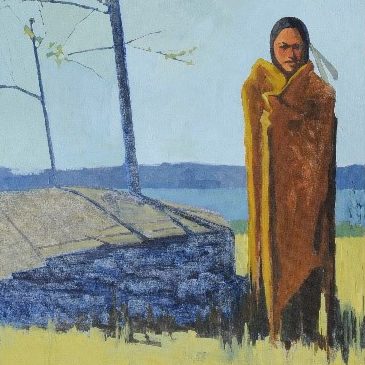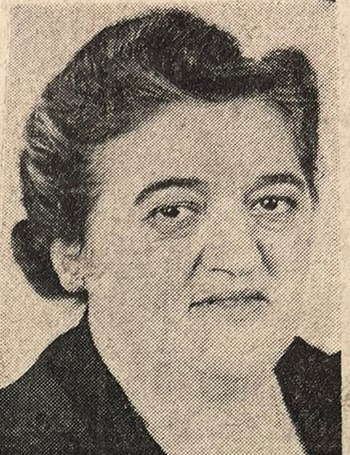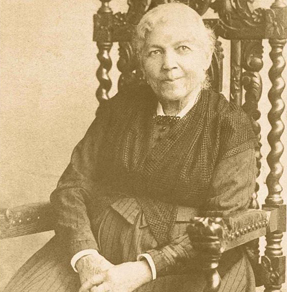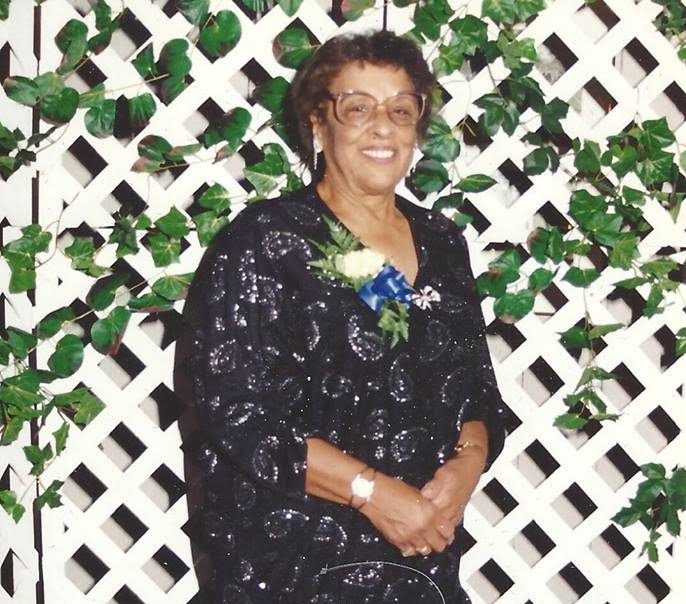Awashonks was a Native American woman who served as a chief of the Sakonnet (variations include Sogkonate, Seconit, Seaconnet, etc.) people in what is today Little Compton, Rhode Island before, during, and after King Philip’s War (1675-1676). The name Awashonks appears in official records more than the name of any other Native American woman.
Awashonks was a Native American woman who served as a chief of the Sakonnet (variations include Sogkonate, Seconit, Seaconnet, etc.) people in what is today Little Compton, Rhode Island. She was the wife of the Sakonnet sachem Tolony and became sachem at his death. The name Awashonks appears in official records more than the name of any other Native American woman. Her birth and death dates can only be estimated from scanty court records. It is estimated that she was born around 1640 and her name disappears from the historical record after 1683 when it last appears in a court case.
In 1671, Awashonks was among the signers of a peace agreement between a confederation of local tribes and Plymouth Colony. The Sakonnets occupied the farthest southwest corner of Plymouth Colony at the time. Although the band that she headed was primarily based on the west side of what is now Little Compton, the tribe would travel throughout the present-day South Coast for gatherings.
Awashonks became an important player in King Philip’s War of 1675-76 as the English colonists worked to divide the Native tribes in Massachusetts, Rhode Island and other Northeast states, to stop support of Metacom (King Philip). She strategically switched sides during the war in attempts to best safeguard her people. Initially, Awashonks supported Chief Metacom, her cousin. He then broke the treaty in 1675, attacking English settlers after suffering years of humiliation at the hands of the Whites. The conflict ended in a colonial victory in 1676, but by that time Awashonks had made peace with the settlers and switched sides.
It is believed that Awashonks pledged support to the English on the condition that Sakonnet men, women and children would not be killed or sent out of the country as slaves. Native enslavement was a widespread practice at the time as the English would punish Natives with forced labor practices, enslavement and banishment to slave colonies in Bermuda or Jamaica. During King Philip’s War, the widespread fear of being sold overseas as slaves was used by Philip-allied Native Americans as a tool recruiting Natives to their side. While the English would make promises not to enslave or transport Natives to their slave colonies and while Awashonks’ bargain with the English initially protected the Sakonnet people immediately after the war, their land was taken and its people did suffer displacement and enslavement.
Lee Blake, New Bedford Historical Society
Information from
- Bourne, Russell. The Red King’s Rebellion: Racial Politics in New England 1675-1678. Atheneum, 1990.
- Drake, Samuel G. The Book of the Indians; or, Biography and History of the Indians of North America, from Its First Discovery to the Year 1841. Antiquarian Bookstore, 1841.
- Fisher, Linford. “‘Why Shall Wee Have Peace to Bee Made Slaves?’ Indian Surrenders during and after King Philip’s War.” Ethnohistory, vol. 64, no. 1, Jan. 2017.
- O’Toole, Marjory Gomez. If Jane Should Want to Be Sold: Stories of Enslavement, Indenture and Freedom in Little Compton, Rhode Island. Little Compton Historical Society, 2017.





